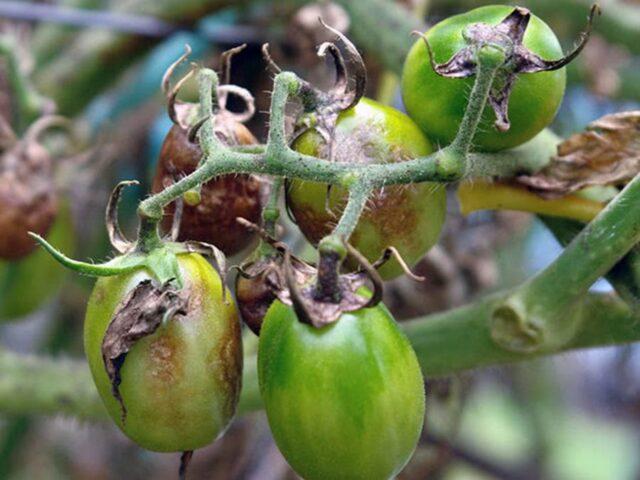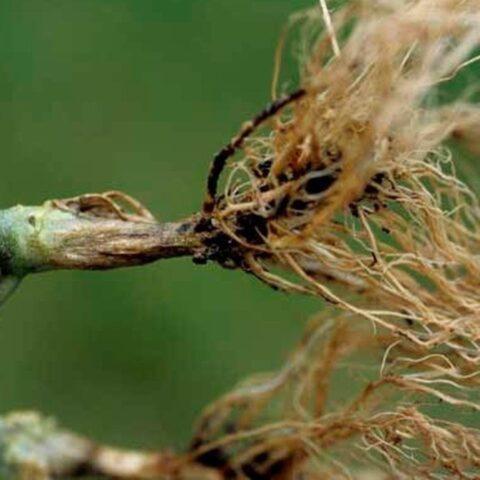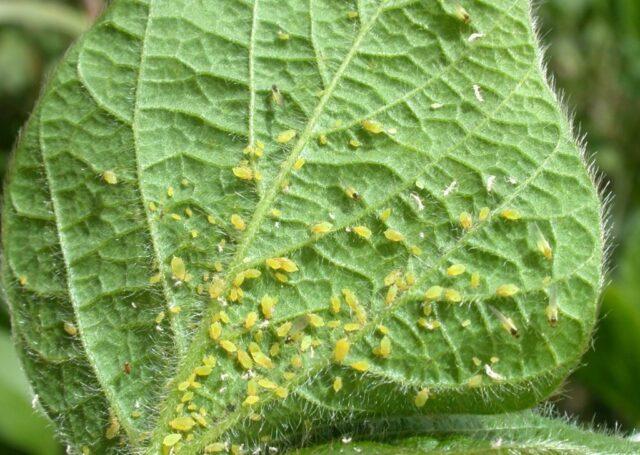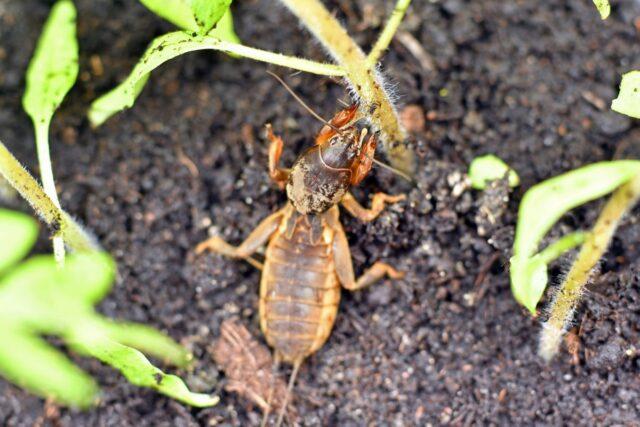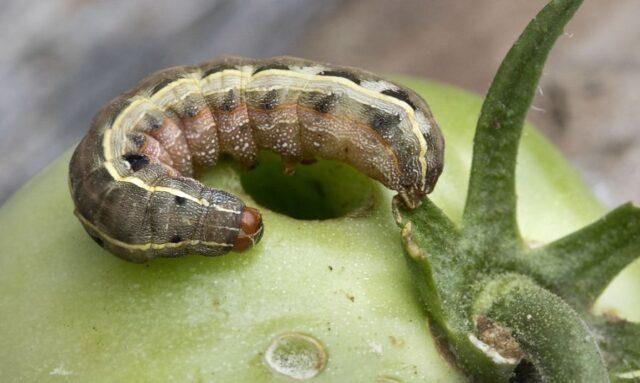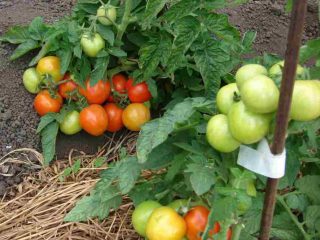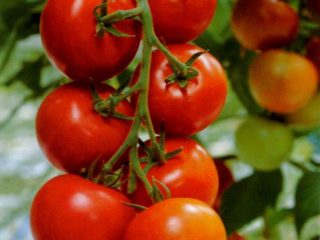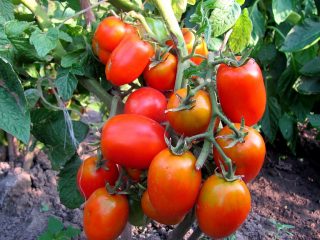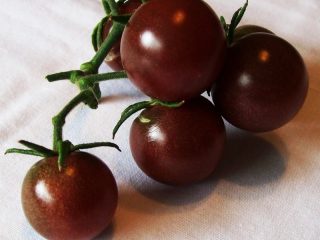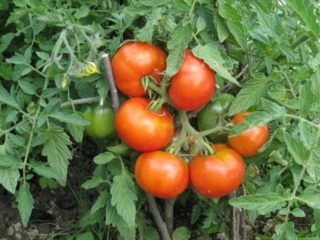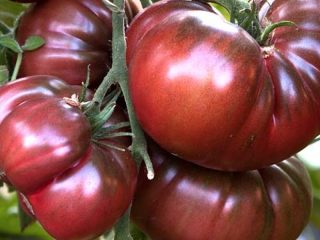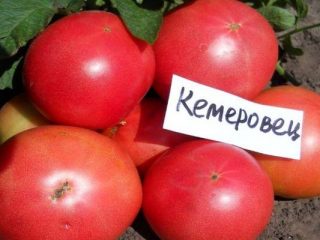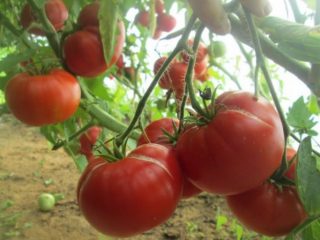Content
Tomato Icicle pink is a popular hybrid with an unusual fruit shape. The plant's agricultural technology differs little from the standard one, but before planting, you need to study the unique characteristics of the variety.
History of selection
Pink icicle is a young tomato of Ukrainian selection, bred by scientists from Dnepropetrovsk. There is little official information about the variety - it is not listed in the State Register and is not zoned for specific regions.
The tomato belongs to the category of hybrids, but the parent species remain unknown. Nevertheless, summer residents respect Pink Icicle for its good taste, versatility of use and high endurance.
Description of the tomato variety Icicle pink
Pink icicle is an indeterminate hybrid tomato variety up to 2 m tall. It has numerous branched shoots and dense green leaves of a standard form for the crop. Recommended for growing in a greenhouse, but can also grow in open ground in the garden.
The hybrid belongs to the mid-early category and ripens on average in 105-115 days from the moment of seed germination. It tolerates unfavorable external conditions well and has high immunity to infections. The first tomato inflorescence appears above the 5-7 leaf, and in total the bushes bear 6-7 clusters, which subsequently produce 6-9 fruits on each.
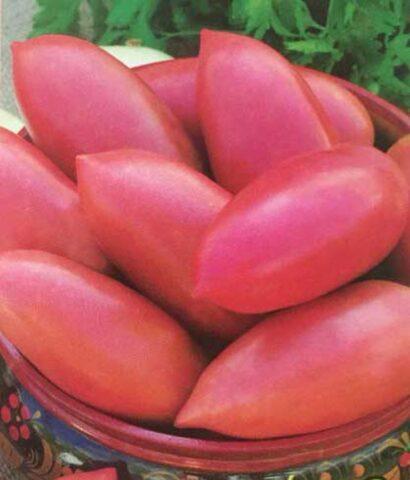
The average weight of Icicle pink tomatoes is 80-110 g
Icicle pink tomatoes are easily recognized by their unusual decorative shape. The fruits are elongated, with a small pointed nose at the end, up to 13 cm in length, fully consistent with their name. The skin of tomatoes is bright pink or reddish, smooth and dense. The fruits do not crack in the heat or after ripening. The pulp has a high dry matter content and has a pleasant sweetish taste. The structure of the tomatoes is quite dense, not loose.
Characteristics of the tomato Icicle pink
The general description gives a rather attractive idea of the pink Icicle hybrid. But before planting a tomato in the country, it is necessary to study its characteristics and scope of application.
Tomato productivity Icicle pink
The Icicle tomato belongs to the high-yielding group of hybrids. In good conditions, subject to growing rules, it can produce up to 10 kg of tomatoes from one bush.
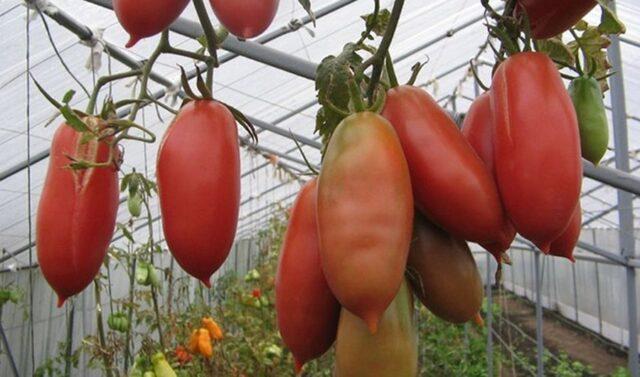
To obtain a bountiful harvest, tomato bushes need to be planted at intervals of at least 50 cm
Resistance to diseases and pests
One of the advantages of the Pink Icicle hybrid is its high resistance to fungal diseases.Tomato is rarely affected by tobacco mosaic, verticillium, fusarium and root nematode, as well as brown and gray spot.
At the same time, late blight, rot and common garden pests - mole crickets, aphids, whiteflies and cutworms - remain dangerous for the hybrid. Growing tomatoes in general is easier than many others, but the bushes still need to be inspected regularly for damage.
How to use
The pink Icicle tomato is universal in use - it is used for making juices and in salads, in pickling, and added to stewed and fried dishes. Tomatoes can be dried for long-term storage.
Since the hybrid is not prone to cracking, it is used for canning in its entirety. The Pink Icicle tomato does not spoil for a long time after harvesting, which is why it is grown for transportation and subsequent sale.
Advantages and disadvantages
The Pink Icicle tomato has numerous benefits. But to objectively evaluate a hybrid, it is also necessary to become familiar with its weaknesses.
Pros: · universal application; · sweet and juicy taste; · long shelf life; · high resistance to most fungal diseases; · good tolerance to temperature changes; · drought resistance; · high productivity. | Minuses: · the hybrid necessarily requires gartering and pinching; · bushes may suffer from late blight; · individual fruits are small in mass and have modest sizes. |
The advantages of the Pink Icicle tomato outweigh the existing disadvantages. However, during the growing process, the hybrid requires increased attention from the gardener. If the rules of agricultural technology are violated, the yield of bushes is greatly reduced.
Features of planting and care
The Pink Icicle tomato has the same care requirements as most other varieties. The crop is grown using seedlings according to the following algorithm:
- At the beginning of spring, as daylight hours increase, a shallow box is prepared for the tomato and filled with nutritious soil with the addition of peat.
- The planting material is kept in a solution of potassium permanganate for about 15 minutes and sown to a depth of 1.5 cm at short intervals.
- Cover the container with film and put it in a warm place at a temperature of about 26 °C.
When the first greenery appears, the shelter is removed and the box is moved to a lighted windowsill. After the formation of two true leaves, the seedlings are picked and planted in peat cups.
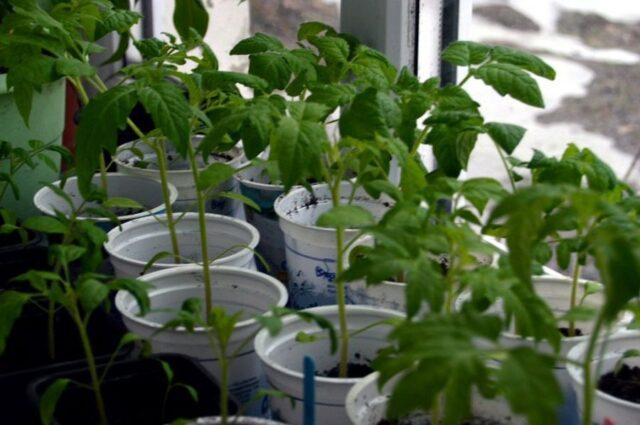
If possible, tomatoes should be grown on a southern windowsill.
Seedlings are usually transferred to open ground in mid-May, after the return frosts have passed. A place on the site is selected that is illuminated and sheltered from strong winds, with fertile soil. To avoid injury to the roots, the seedlings are transferred into the holes together with a clod of earth or transferred to a new place directly in peat cups.
Caring for the pink Icicle tomato consists of standard procedures:
- Watering. It is necessary to moisten the tomato bushes twice a week, preventing the soil at the roots from drying out.
- Feeding. During the growing season, tomatoes are fertilized three times with complex minerals at intervals of 2-3 weeks. It is also allowed to use manure, humus and compost, especially soon after planting during active growth.
- Stepsonning and formation. It is recommended to plant Icicle pink tomato in 1-2 stems, removing all excess shoots. If the plantings are too dense, the fruits of the hybrid become smaller and lose their richness of taste.
A tall plant requires the installation of a support or trellis, otherwise the stems will lie on the ground. The soil under the tomato bushes must be loosened after each watering to ensure air access.
Pest and disease control
The pink Icicle tomato has good immunity to many ailments. But in open ground it can still be harmed by:
- late blight - the disease appears in mid-summer, the leaves turn brown and the fruits stop growing;
Spraying with Phytosporin in the early stages helps with late blight.
- root rot - the stems darken at the bottom, and then soften and lie down;
Root rot develops in rainy summers when the soil is waterlogged
- aphids - small insects in large colonies attack tomato leaves from the underside;
You can use garlic infusion or soap solution against aphids.
- mole cricket - a garden parasite that digs tunnels in the ground and damages the roots, and also eats the stems of bushes;
The fight against mole crickets is carried out using traps and insecticidal preparations.
- cutworm - green or brownish caterpillars of butterflies gnaw through leaves and ripening fruits.
The drug Actofit or a decoction of celandine is used against cutworms.
Regular loosening of the soil in tomato beds is a good way to prevent diseases and pests. Most often, diseases occur due to waterlogging or due to initial contamination of seeds. Therefore, the material is disinfected before planting, and the soil is watered only when it dries.
Conclusion
The Pink Icicle tomato is characterized by good taste and high yield.The requirements for growing the hybrid are standard; the main attention should be paid to watering and the formation of bushes.
Reviews from gardeners about the Icicle pink tomato
